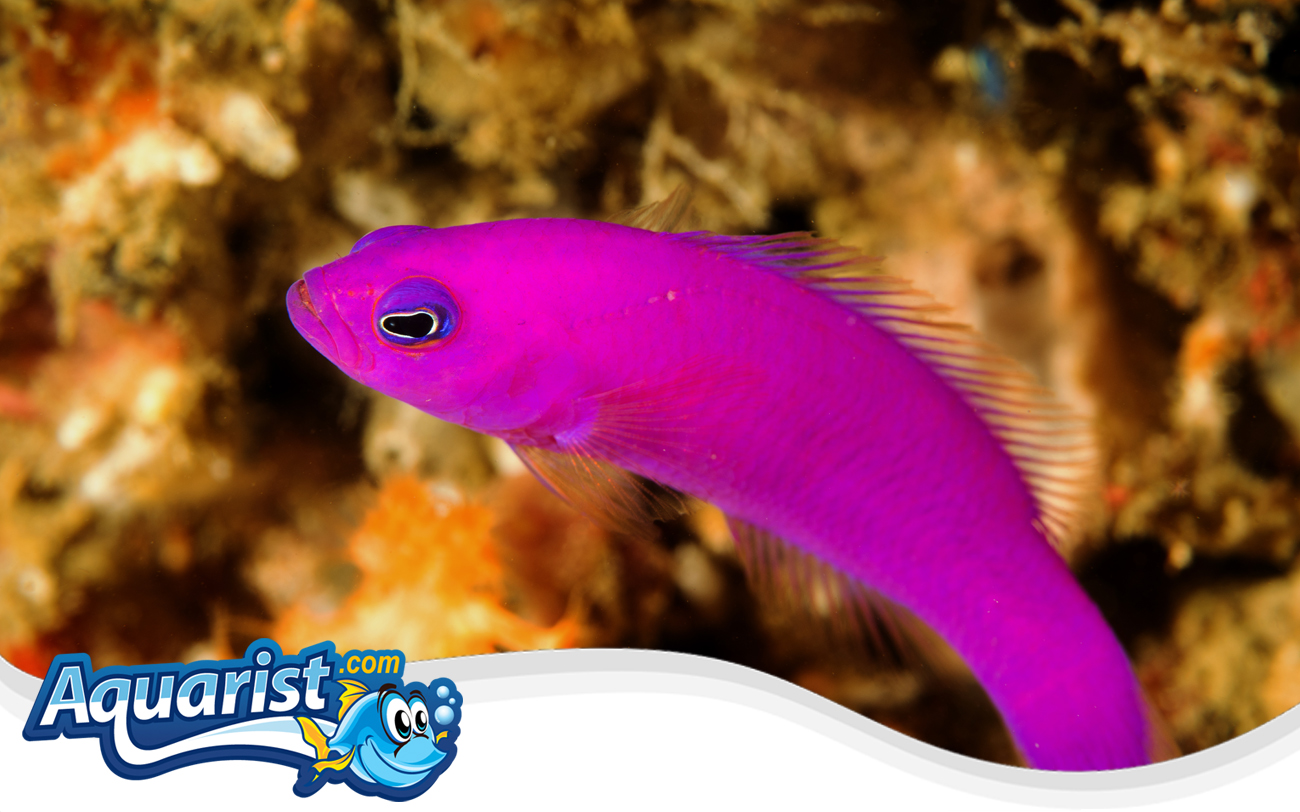Overview
- Native to the Western Pacific, commonly found inhabiting coral reefs and rocky crevices.
- Recognized by its striking magenta-purple coloration that can vary slightly in intensity.
- Known for its bold and territorial behavior, suitable for aquarists with some experience.
- Hardy and popular species due to its bright coloration and active nature.
Feeding
- Carnivorous; naturally feeds on small marine invertebrates and crustaceans.
- Accepts various foods including mysis shrimp, brine shrimp, finely chopped seafood, and high-quality marine pellets or flakes.
- Multiple small feedings per day recommended to maintain health and vibrant coloration.
- A varied diet ensures balanced nutrition and optimal health.
Habitat
- Thrives in medium-sized aquariums (minimum 30 gallons) with ample hiding spots and structured live rock.
- Stable, mature aquarium conditions are essential for long-term success.
- Provide numerous caves and crevices to replicate natural habitats and minimize territorial aggression.
- Moderate water flow and efficient filtration are necessary for optimal water quality.
Fish Care
- Optimal water temperature: 72-78°F (22-26°C).
- Recommended pH: 8.1-8.4; specific gravity: 1.020-1.025.
- Hardy species, yet sensitive to abrupt changes; regular monitoring and maintenance required.
- Monitor regularly for signs of marine diseases and parasites; prompt intervention ensures optimal health.
Compatibility
- Semi-aggressive; best housed with similarly sized or larger robust fish species.
- Reef-safe with caution; may prey on smaller ornamental shrimp and invertebrates.
- Ideal companions include clownfish, dwarf angelfish, tangs, and other semi-aggressive marine fish.
- Territorial behavior necessitates careful introduction and adequate space to reduce aggression.
Aquarium Behavior
- Active and territorial swimmer, often exploring and defending territory aggressively.
- May exhibit aggression toward similarly sized fish or other dottybacks.
- Providing ample hiding spots and clearly defined territories helps manage territorial aggression.
- Interactive and often engages with aquarium caretakers, particularly during feeding.


